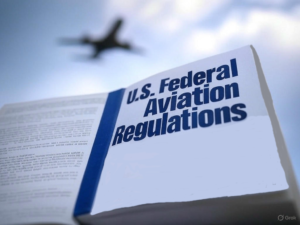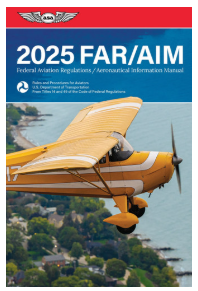Important FAR (Federal Aviation Regulation) Sections for pilot training
 There are same primary sections of the Federal Aviation Regulations (FARs) tha every career focused student should be aware of and know how to navigate.
There are same primary sections of the Federal Aviation Regulations (FARs) tha every career focused student should be aware of and know how to navigate.
The primary sections a pilot will reference will include:
Federal Aviation Regulations 14 CFR Part 43
FAA Regulation Section 43, known as “Part 43,” governs the maintenance, preventive maintenance, rebuilding, and alteration of aircraft. It outlines the standards and procedures for performing these tasks, ensuring aircraft safety and airworthiness. Part 43 specifies who is authorized to perform maintenance, including certified mechanics, repair stations, and pilots (under certain conditions). It also details record-keeping requirements for documenting maintenance activities. The regulation includes appendices that provide detailed standards for inspections, repairs, and alterations, ensuring that all maintenance work meets consistent safety and quality standards. While pilots won’t be required to know all the ins and outs of physically maintaining a plane, they are required to be able to determine when an aircraft is airworthy or not. These regulations provide guidance on this topic.
Federal Aviation Regulations 14 CFR Part 61
A Regulation Section 61, known as “Part 61,” establishes the certification requirements for pilots, flight instructors, and ground instructors. It outlines the eligibility criteria, knowledge and practical test requirements, and necessary flight experience for obtaining and maintaining various pilot certificates and ratings, such as private, commercial, and airline transport pilot licenses. Part 61 also specifies the medical certifications required, flight instructor endorsements, and the procedures for certificate renewals and reissuance. This regulation ensures that all aviators meet standardized qualifications and training protocols to promote safety and competence in the aviation industry.
Federal Aviation Regulations 14 CFR Part 91
FAA Regulation Section 91, known as “Part 91,” outlines the general operating and flight rules applicable to all civil aircraft operating in the United States. It covers a broad range of topics essential for safe and compliant flight operations, including flight rules, pilot certifications, maintenance requirements, aircraft equipment mandates, and operating limitations. Key areas include preflight actions, in-flight regulations, instrument and visual flight rules (IFR and VFR), right-of-way rules, and emergency procedures. Part 91 serves as a fundamental regulatory framework ensuring safety, efficiency, and standardization across all non-commercial aviation activities.
FAA AIM (Aeronautical Information Manual)
The FAA Aeronautical Information Manual (AIM) is a critical resource for anyone training to become a pilot or working in aviation. Published by the Federal Aviation Administration (FAA), it serves as a comprehensive guide to the National Airspace System (NAS) and standard aviation procedures in the United States. The AIM provides essential information on topics such as airspace classifications, air traffic control (ATC) procedures, navigation aids, airport operations, and flight safety protocols. It also covers weather services, emergency procedures, and best practices for safe flight operations. Updated regularly, the AIM ensures pilots and aviation professionals stay informed about current regulations and operational standards. For trainees, the AIM is an invaluable tool for understanding the rules of the sky, preparing for FAA exams, and developing situational awareness. While not a regulatory document itself, it complements the Code of Federal Regulations (CFR) and is widely referenced in training programs. Studying the AIM helps aspiring pilots build a strong foundation for safe, efficient, and compliant flight operations, making it a must-read for anyone pursuing a career in aviation.
 A great resource that incorporates all of these is the ASA FAR/AIM that can be found at:
A great resource that incorporates all of these is the ASA FAR/AIM that can be found at:
https://asa2fly.com/far-aim-series/
They also offer the iPad app version on the iTunes store:
https://apps.apple.com/us/app/far-aim/id361784690
This app updates with every update and does not need to be purchased every year. I honestly encourage a pilot in training to have both.
The search function in the ASA app is extremely helpful, and the paper copy is great to use while studying along the way. Learning with the paper copy can help information retention and gives the pilot the ability to tab our key sections as they go through training.

Comments
Important FAR (Federal Aviation Regulation) Sections for pilot training — No Comments
HTML tags allowed in your comment: <a href="" title=""> <abbr title=""> <acronym title=""> <b> <blockquote cite=""> <cite> <code> <del datetime=""> <em> <i> <q cite=""> <s> <strike> <strong>